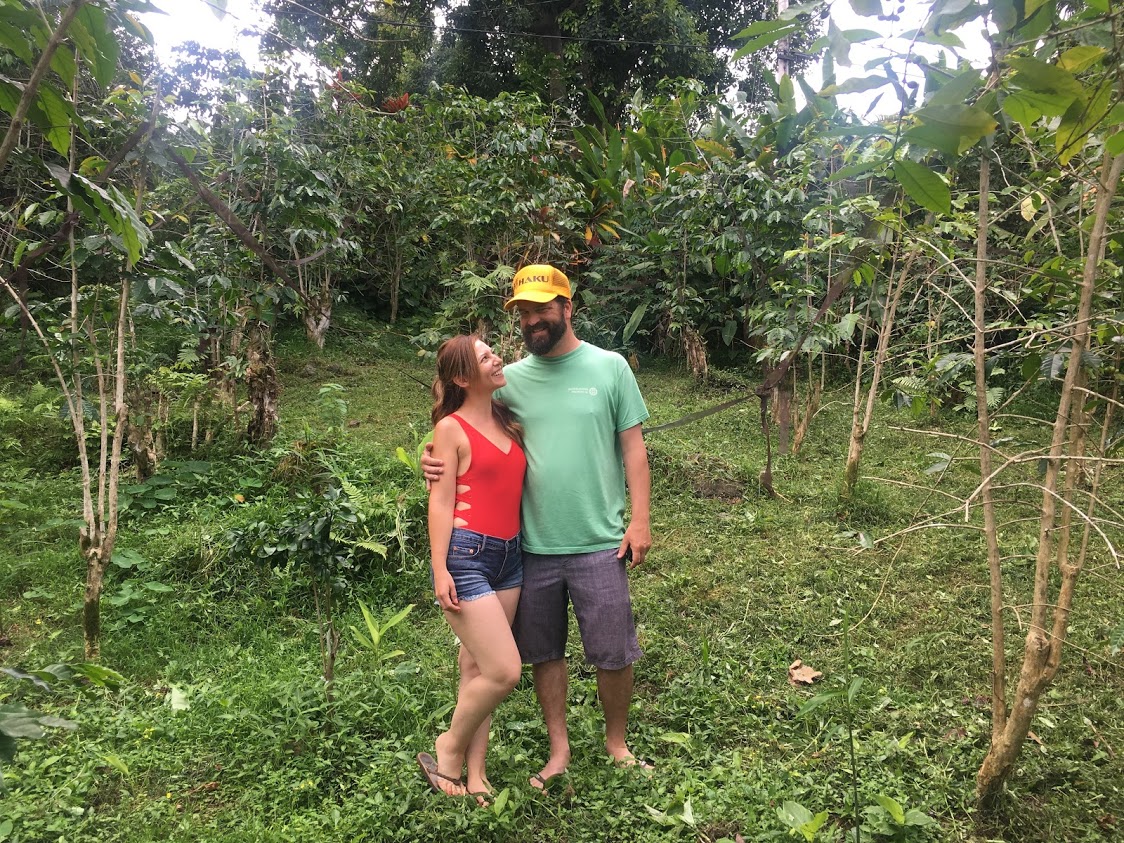Coffee Tasting in Kona is a MUST
July 16, 2018
Tim and I are absolute coffee addicts. Well, maybe I’m the coffee addict and he now enjoys a good cup. But he also makes the best pour-over coffee, so how could I not require a daily dose of caffeinated perfection each morning? Point is, coffee is a crucial part of my day. Not because it has caffeine, but because it’s apart of our routine and feels like a hug in a cup. So naturally, we had to tour a coffee roaster while visiting the Big Island.
Kona coffee is known for being some of the best coffee in the world. It's typically known for being full-bodied. It's also known for being some of the most expensive coffee you can buy. Kona coffee grows on the volcanic slopes of the Big Island in Kona. The slopes are covered in coffee bean farms and roasters, with many of them offering tours and samplings of their beans. You could spend several days visiting several different farms and still not get to each one.
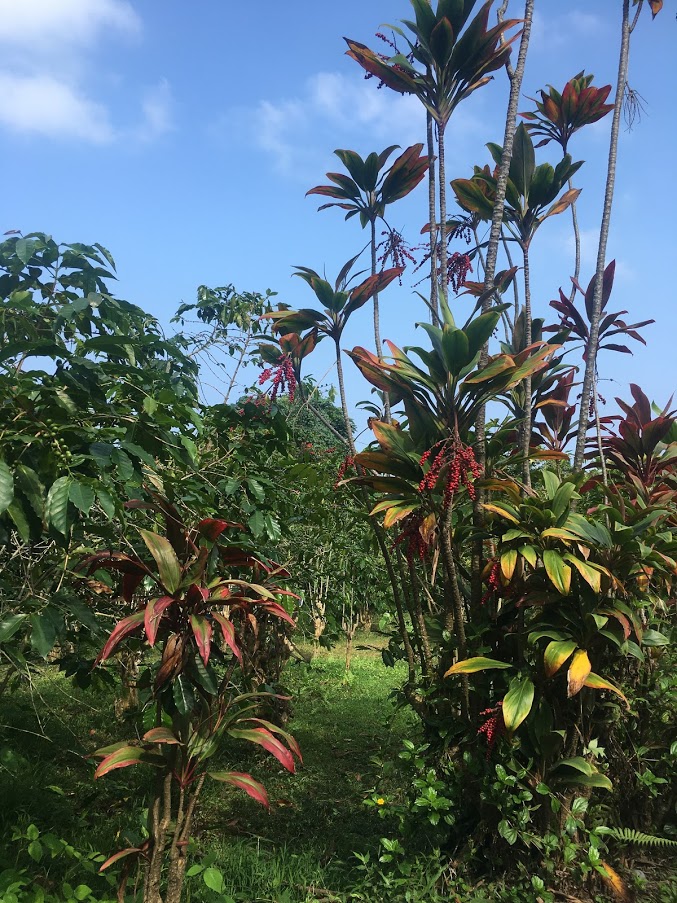
We started our morning in Kona visiting Kona Coffee & Tea to wake up our palates. We wanted something milky, but still wanted to enjoy the beautiful coffee they’re known for producing. Kona Coffee & Tea grow the beans themselves, roast them, and then use them fresh in the cafe. They have won many awards and serve up 100% Kona Coffee. I got my typical cortado with half coconut and macadamia milk. It was the perfect tropical cup of coffee to start my day of coffee paradise.
From there we headed up to the volcanic slopes of Kona to our coffee tour at Rooster Farms. Rooster Farms is 100% organic and 100% Kona coffee. The farm believes we as consumers should be aware and conscious of what we’re putting in our bodies, and I couldn’t agree more. When arriving at Rooster Farms, we were greeted by those working on the farm. We came to find out that they were from all over the world, farming as a work exchange for free room and board. And lucky for us, we were the ONLY two for our tour time.
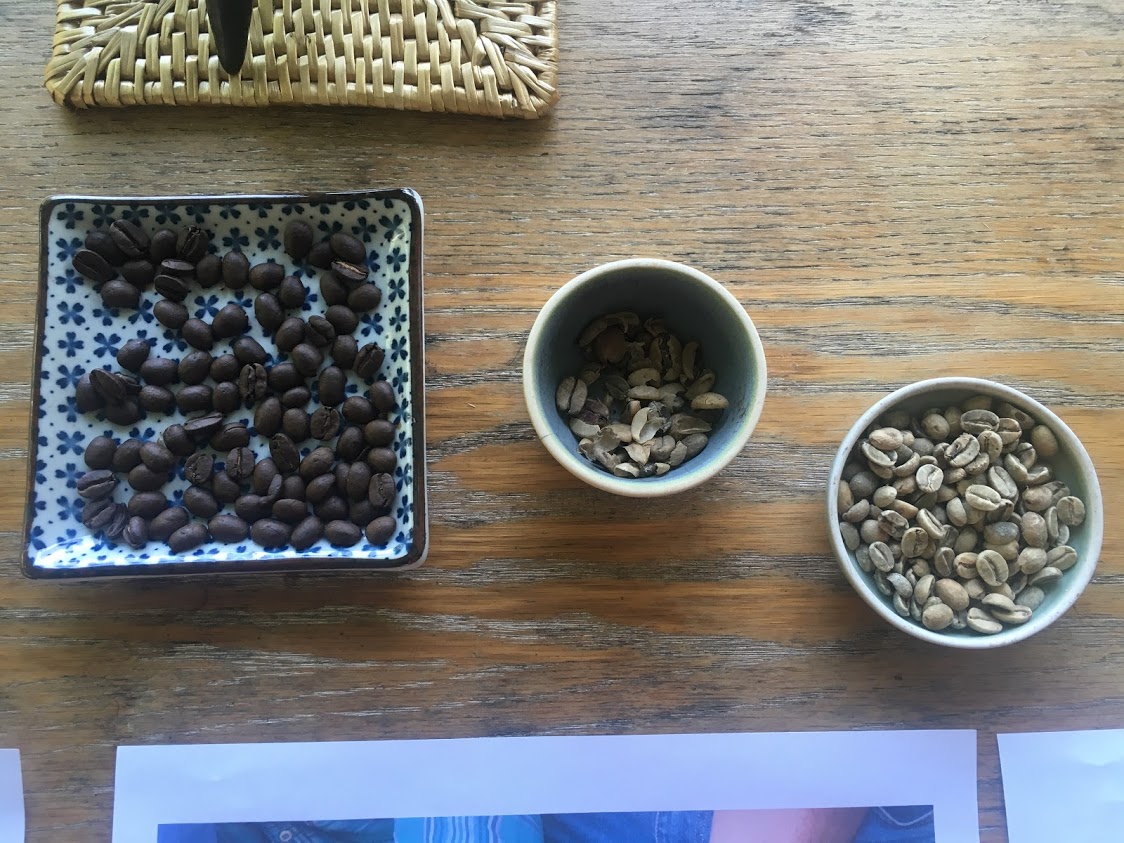

Our tour began with an overview of the beans themselves. We were shown what the beans look like at different stages before and after roasting as he brewed up our pour-overs. The house on the farm overlooks the ocean as it sits high on the slope. Towering avocado trees cover a great deal of the property and provide shade for the house. With a large open-concept kitchen, geckos and fellow bug friends joined us in our cupping. We tried the medium and dark roast varieties fresh from the farm. After trying both, our guide made us each a cup of our favorite and we proceeded to head outside for the rest of the tour.
The grounds themselves are stunning. The tropical weather has created a lush landscape with green in every direction. We walked down the road we drove up before walking among the rows of coffee bean trees. The coffee tree itself is considered a tropical evergreen, so it’s no wonder why I love it so. The coffee beans are found inside the ‘fruit’ of the coffee tree, technically the seed. The fruit is called a cherry and grows in clusters. The cherries start off green and are ready to pick once they turn bright juicy red. Once bright red, the cherries are harvested and the bean itself is removed. The harvest usually begins in August or September for Rooster Farms, but we spotted early signs of ripening cherries during our tour in June. Since we spotted the few ripened cherries, our tour guide picked one and allowed us to try the fruit. The coffee cherry was sweet with a subtle touch of bitterness coming from the skin.
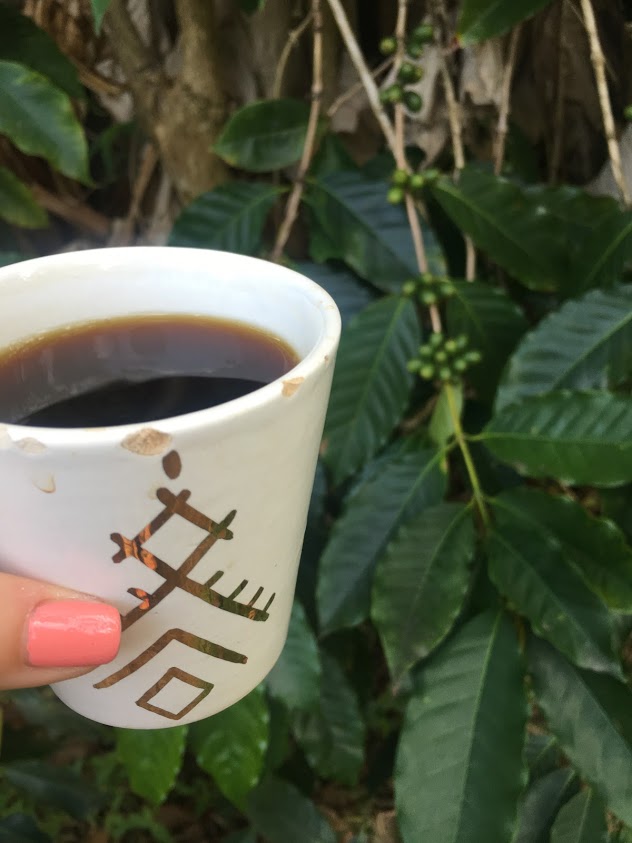
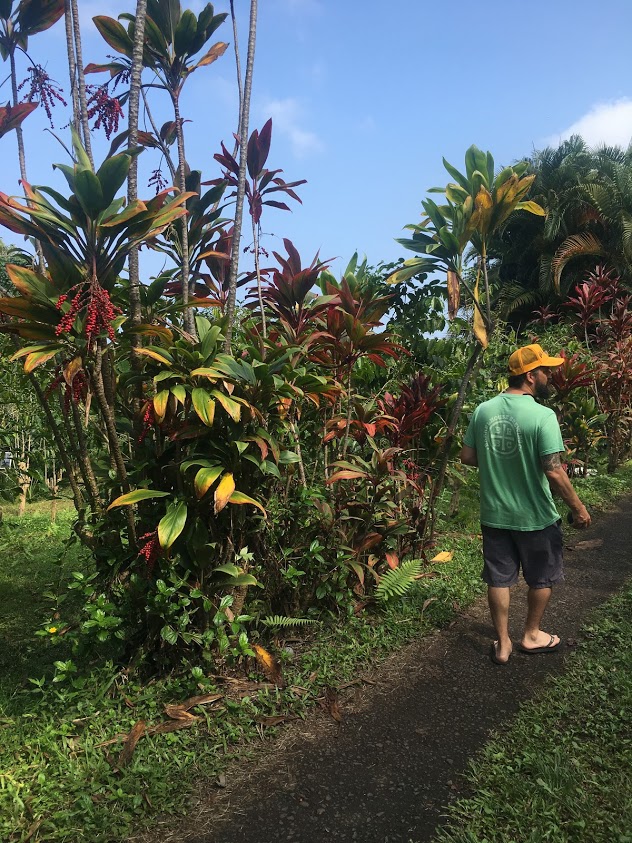
From there we walked further into the farm’s grounds to the drying and bagging area. We also learned about their natural ‘pesticide’ that they use to protect the plants, yet are conscious of keeping us as consumers safe from toxic chemicals. It’s a simple setup without a bunch of showy materials or grand buildings. For me, it added to the charm, the experience, and I respect the farm more because of it.
On our way back up to the farmhouse, we spotted several avocados on the ground. There are so many on the property that they can’t possibly keep up with the ripening of them. Our guide was kind enough to get a beautiful large avocado that was half the size of my head. Back at the house, we looked at the classic roasting system they’re using and talked about how the farm has grown over the years. The farm is producing more and more quantity of beans each year while keeping a high standard for quality. We purchased a couple of bags of coffee beans to enjoy once back on the mainland and said our goodbyes. As we drove away, I couldn’t help but think about how thankful I was to experience an authentic coffee tour from those who are passionate about coffee while feeling the beautiful punch of caffeine.
